
The neon tetra is a freshwater fish of the characin family of order Characiformes. The type species of its genus, it is native to blackwater and clearwater streams in the Amazon basin of South America. Its bright colouring makes the fish visible to conspecifics in the dark blackwater streams, and is also the main reason for its popularity among freshwater fish hobbyists, with neon tetras being one of the most widely kept tropical fish in the world.

Ichthyophthirius multifiliis, often termed "Ich", is a parasitic ciliate described by the French parasitologist Fouquet in 1876. Only one species is found in the genus which also gave name to the family. The name literally translates as "the fish louse with many children". The parasite can infect most freshwater fish species and, in contrast to many other parasites, shows low host specificity. It penetrates gill epithelia, skin and fins of the fish host and resides as a feeding stage inside the epidermis. It is visible as a white spot on the surface of the fish but, due to its internal microhabitat, it is a true endoparasite and not an ectoparasite.

The clown triggerfish, also known as the bigspotted triggerfish, is a demersal marine fish.

The Jack Dempsey is a species of cichlid fish that is native to freshwater habitats from southern Mexico to Honduras, but also introduced elsewhere. Its common name refers to its aggressive nature and strong facial features, likened to that of the famous 1920s boxer Jack Dempsey.
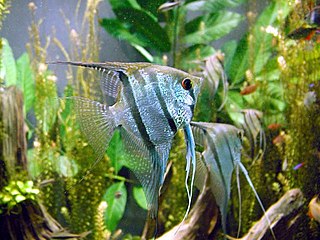
Pterophyllum is a small genus of freshwater fish from the family Cichlidae known to most aquarists as angelfish. All Pterophyllum species originate from the Amazon Basin, Orinoco Basin and various rivers in the Guiana Shield in tropical South America. The three species of Pterophyllum are unusually shaped for cichlids being greatly laterally compressed, with round bodies and elongated triangular dorsal and anal fins. This body shape allows them to hide among roots and plants, often on a vertical surface. Naturally occurring angelfish are frequently striped transversely, colouration which provides additional camouflage. Angelfish are ambush predators and prey on small fish and macroinvertebrates. All Pterophyllum species form monogamous pairs. Eggs are generally laid on a submerged log or a flattened leaf. As is the case for other cichlids, brood care is highly developed.
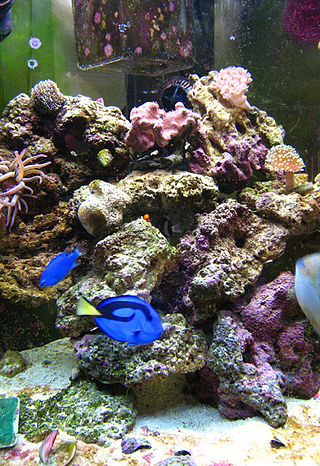
A marine aquarium is an aquarium that keeps marine plants and animals in a contained environment. Marine aquaria are further subdivided by hobbyists into fish only (FO), fish only with live rock (FOWLR), and reef aquaria. Fish only tanks often showcase large or aggressive marine fish species and generally rely on mechanical and chemical filtration. FOWLR and reef tanks use live rock, a material composed of coral skeletons harboring beneficial nitrogen waste metabolizing bacteria, as a means of more natural biological filtration.
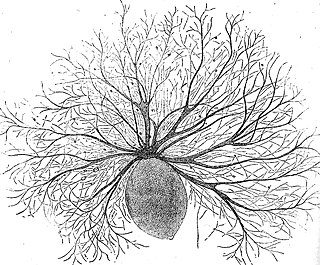
Velvet disease is a fish disease caused by dinoflagellate parasites of the genera Amyloodinium in marine fish, and Oodinium in freshwater fish. The disease gives infected organisms a dusty, brownish-gold color. The disease occurs most commonly in tropical fish, and to a lesser extent, marine aquaria. Periodic use of preventive treatments like aquarium salt can further deter parasites. Regular monitoring, attentive care, and preventive measures collectively contribute to keeping fish healthy and velvet-free.

The Congo tetra is a species of fish in the African tetra family, found in the central Congo River Basin in Africa. It is commonly kept in aquaria.

Fishkeeping is a popular hobby, practiced by aquarists, concerned with keeping fish in a home aquarium or garden pond. It is a practice that encompasses the art of maintaining one's own aquatic ecosystem, featuring a lot of variety with various water systems, all of which have their own unique features and requirements. Fishkeeping primarily serves as a token of appreciation and fascination for marine life and the environment that surrounds such, along with other purposes such as the piscicultural fishkeeping industry, serving as a branch of agriculture, being one of the most widespread methods of cultivating fish for commercial profit.

The common goldfish is a breed of goldfish and a family of Cyprinidae in the order cypriniformes. Goldfish are descendants of wild carp from East Asia. Most varieties of fancy goldfish were derived from this simple breed. Common goldfish come in a variety of colors including red, orange, red/white, white/black, yellow/white, blue, grey/brown, olive green, yellow, white, and black, with the most common variation being orange, hence the name. The brightness, duration, and vividness of the color may be an indication of the fish's health status, but not always, as water conditions and quality of care affect the fish's appearance.
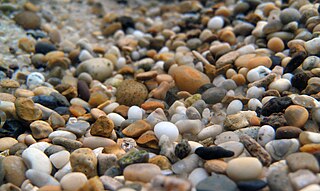
The substrate of an aquarium refers to the material used on the tank bottom. It can affect water chemistry, filtration, and the well-being of the aquarium's inhabitants and is also an important part of the aquarium's aesthetic appeal. The appropriate substrate depends on the type of aquarium; the most important parameter is whether the aquarium contains fresh water or saltwater.

Cryptocaryon irritans is a species of ciliates that parasitizes marine fish, causing marine white spot disease or marine ich. It is one of the most common causes of disease in marine aquaria.
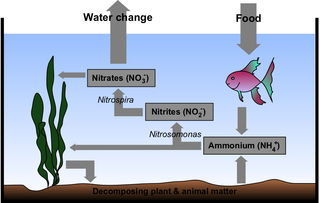
Ornamental fish kept in aquariums are susceptible to numerous diseases. Due to their generally small size and the low cost of replacing diseased or dead fish, the cost of testing and treating diseases is often seen as more trouble than the value of the fish.

Dropsy is a condition in fish caused by the buildup of fluid inside the body cavity or tissues. As a symptom rather than a disease in its own right, it can indicate a number of underlying diseases, including bacterial infections, parasitic infections, or liver dysfunction.

Shark Reef Aquarium is a public aquarium on the Las Vegas Strip in Paradise, Nevada. It is located at and owned by the Mandalay Bay resort. The attraction opened on June 20, 2000. Its main tank is 1,300,000 US gallons (4,900,000 L), one of the largest in North America. The facility is 105,000 sq ft (9,800 m2), and displays numerous species of sharks, rays, fish, reptiles, and marine invertebrates. It also features a shark tunnel. The reef was developed in consultation with the Vancouver Aquarium.

Taraporewala Aquarium or Taraporevala Aquarium is India's oldest aquarium and one of Mumbai's main attractions. It hosts marine and freshwater fish. The aquarium is located on Marine Drive.

A freshwater aquarium is a receptacle that holds one or more freshwater aquatic organisms for decorative, pet-keeping, or research purposes. Modern aquariums are most often made from transparent glass or acrylic glass. Typical inhabitants include fish, plants, amphibians, and invertebrates, such as snails and crustaceans.

Stichodactyla gigantea, commonly known as the giant carpet anemone, is a species of sea anemone that lives in the Indo-Pacific area. It can be kept in an aquarium but is a very challenging species to keep alive and healthy for more than 3–5 years.

An aquarium is a vivarium of any size having at least one transparent side in which aquatic plants or animals are kept and displayed. Fishkeepers use aquaria to keep fish, invertebrates, amphibians, aquatic reptiles, such as turtles, and aquatic plants. The term aquarium, coined by English naturalist Philip Henry Gosse, combines the Latin root aqua, meaning 'water', with the suffix -arium, meaning 'a place for relating to'.

Swim bladder disease, also called swim bladder disorder or flipover, is a common ailment in aquarium fish. The swim bladder is an internal gas-filled organ that contributes to the ability of a fish to control its buoyancy, and thus to stay at the current water depth without having to waste energy in swimming. A fish with swim bladder disorder can float nose down tail up, or can float to the top or sink to the bottom of the aquarium.
























